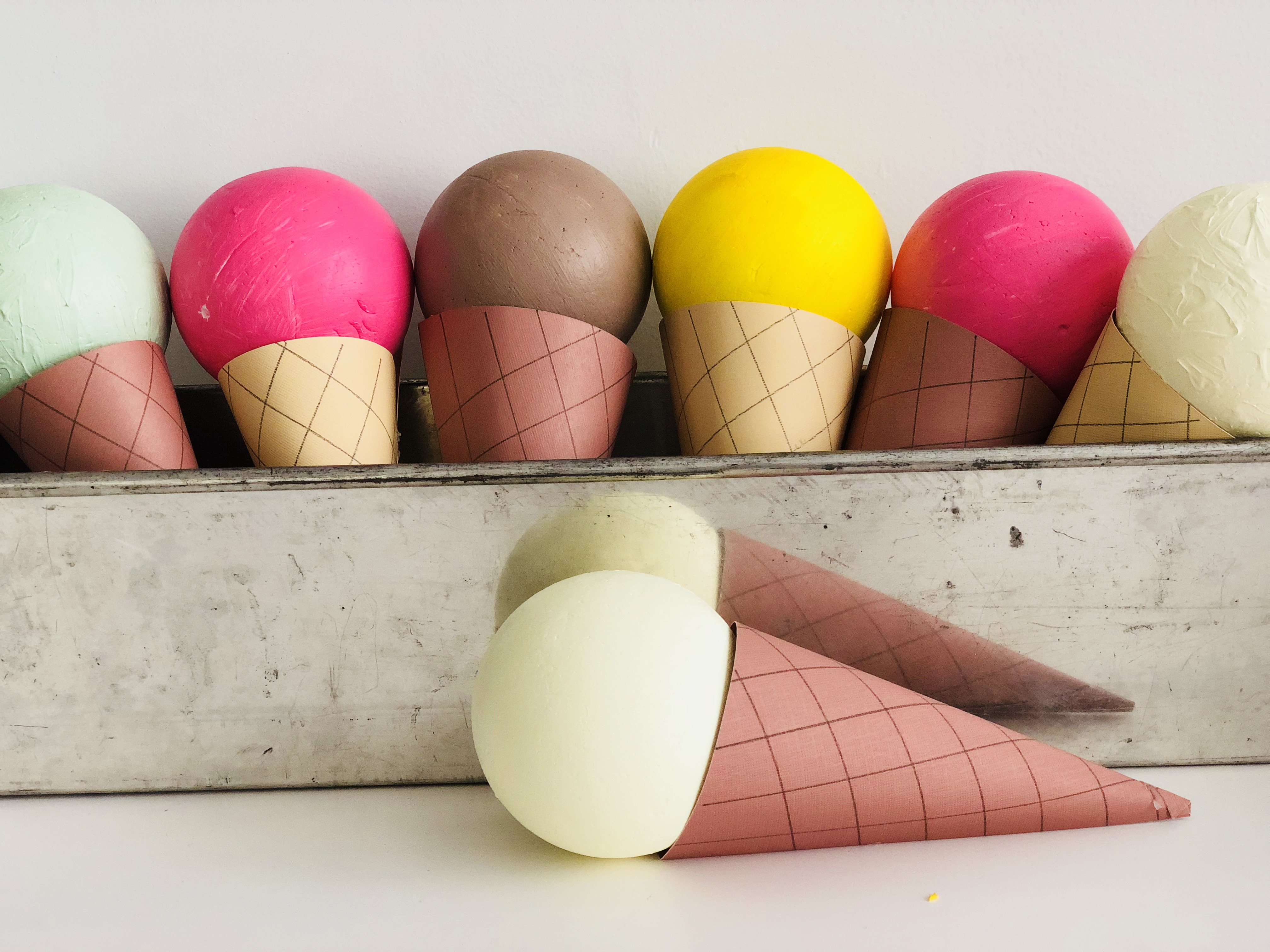Learning Games: Start a Cookie Shop
Miss T was almost four when we started our cookie shop. I initiated it as one of several learning games we could play when I picked her up after school.
Originally, my goal was to teach her a little math. It turned out to be a game that also taught her life lessons and so much more.
The short video below tells the story as you watch Miss T, three months shy of four years old, begin to develop her skills in presentation, listening, and engaging with adults. (In the video, she is speaking in French, which is one of her three languages.)
What Children Learn from this Activity
Cookie shop is one of the fun, interactive learning games we continue to enjoy. From the video, you can see that a child learns:
- How to interact with adults—this game teaches children to look adults in the eye and engage with them.
- Presentation skills—Miss T presents herself to her customers by smiling and being gracious.
- Display skills—Miss T needs to think about how to showcase the cookies; cookies are arranged by size and not tossed in a jumbled heap.
- Listening skills—Miss T listens carefully to select the right size, shape and color of the cookies for the customer.
- Math skills—Miss T has to understand the cookie prices and to charge the correct amount.
What you Need to Set up Shop
- Air-dry clay or Play-Doh in various colors
- Cookie cutters, molds, and rolling pin
- A table and chair for the shop
- Play money in $1 and $5 denominations
- A wallet or purse for the customer
- Small shopping bags
- Ice cream cones and/or lollipops (optional)
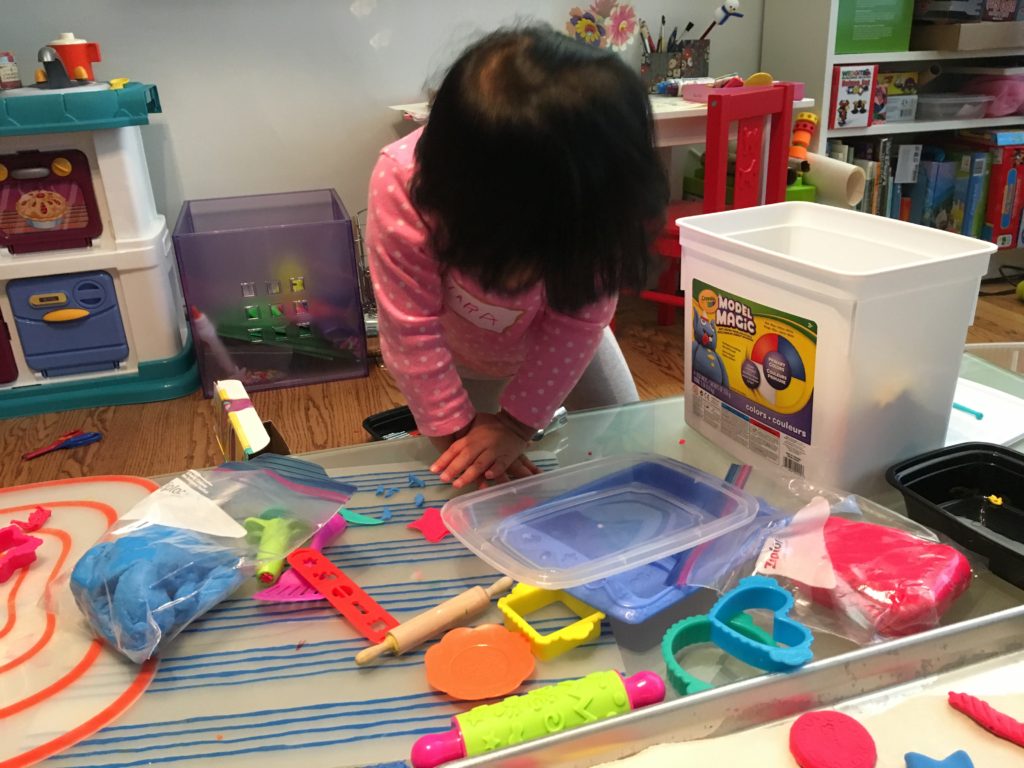
Make the Cookies
To start, you’ll need a variety of cookies. While you can use Play-Doh, which most families have on hand, cookies will get brittle after air drying. Air-dry clay makes more attractive and durable cookies. Here’s the brand I used, as an example. There are many other choices.
Shape the cookies using real cookie cutters or Play-Doh cookie-making molds. We used both. Make cookies in different sizes: small, medium, and large. Allow the cookies to dry completely.
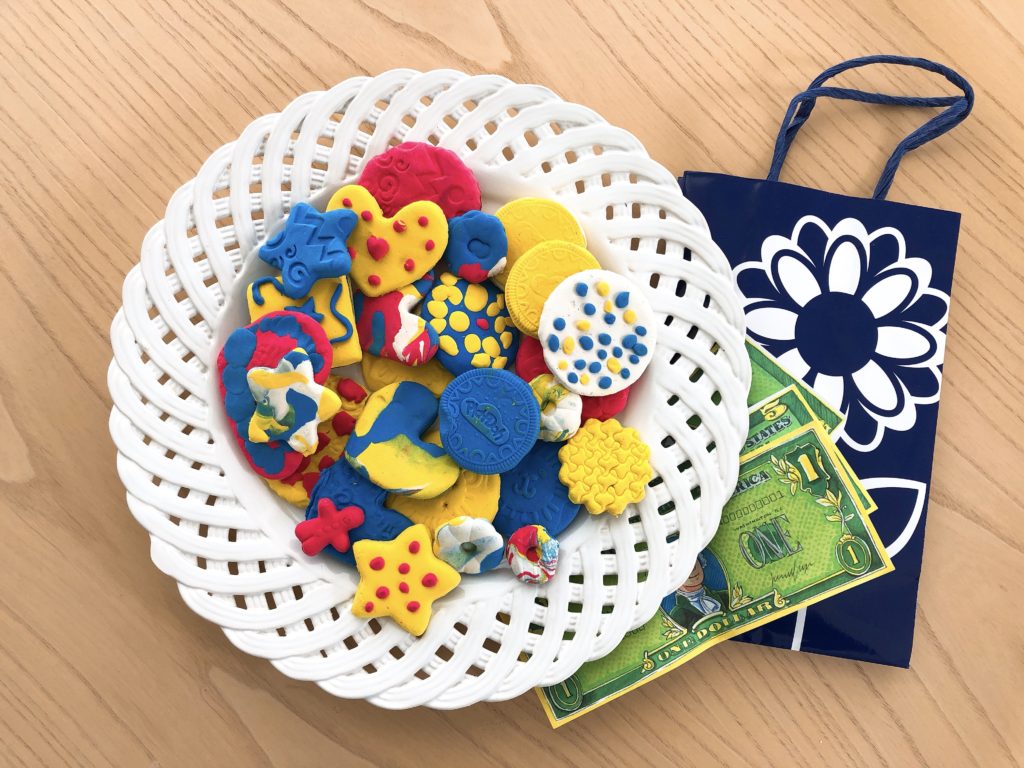
Pricing the Cookies
I used $1 as the base price for all cookies to make it easier to tally an order. A large cookie is $1, while medium cookies are two for $1, and small cookies are five for $1. When buying medium or small cookies, customers should order the exact amount to equal $1, to help the child with calculations; that means, buying five small cookies, rather than three, for example, which would complicate the math.
Initially, Miss T wanted to just pretend how much to charge—tossing out an arbitrary number. It’s important to make kids stick to the prices you’ve set so they can learn to do the math.
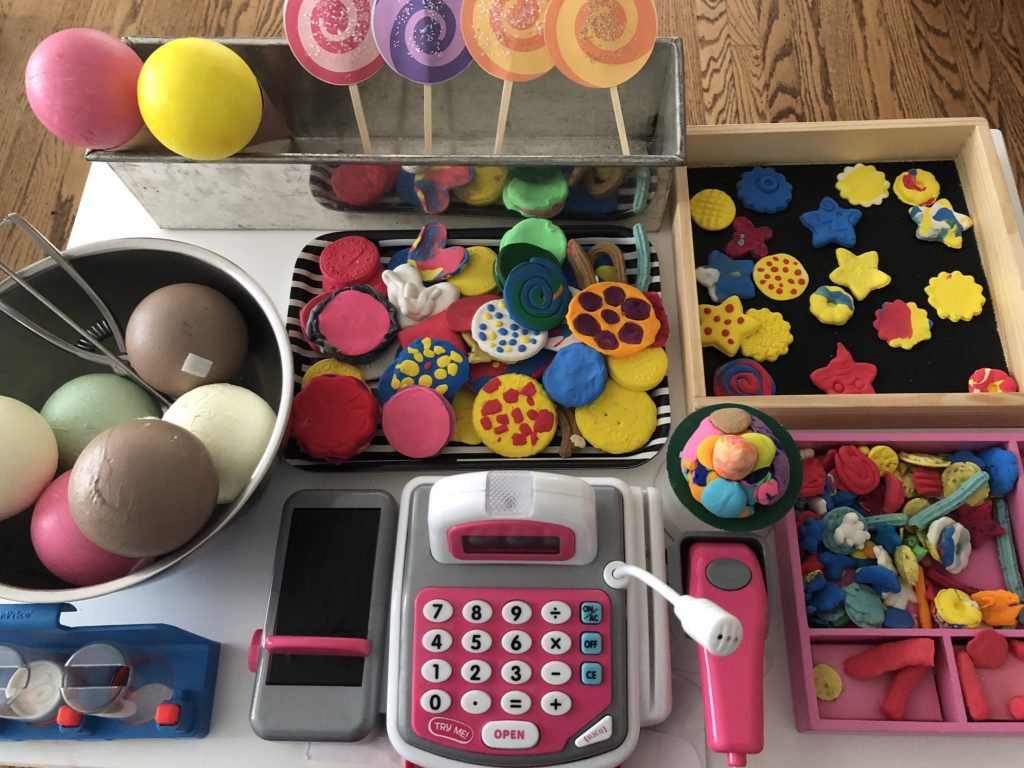
Setting up Your Store
Ideally, use a child-size table and chair for the shop. Have the child set up the cookies in groups by size. We use Melissa and Doug partitioned boxes from some of our food toy sets for our cookie trays; however, you can use small trays or shallow gift boxes as well. Put the small shopping bags to the side next to the table.
Print play money in $1 and $5 denominations from a website or purchase them. Set aside some play money on the table to give change. Give the rest to customers to buy the cookies.
Other Accoutrements
If your child has a toy cash register, add that to the table. We also have an old telephone we use so customers can call in orders.
Make ice cream cones for your cookie shop with Styrofoam balls and card stock.
Playing the Game
Familiarize the child with the pricing structure. Most importantly when playing the game, customers should not just grab the cookies they want, but describe the cookies by color and size and have the child pick them out.
The child should set aside the cookies the customer wants, but not put them in the bag yet. Once the order is complete, help the child to determine what is owed.
For example, “The large cookie is one dollar (set that one aside), the second large cookie is another dollar (set aside), so that’s two dollars. A set of five small cookies is one more dollar so that’s three dollars…”
Once the total is determined, the child can put the cookies in the shopping bag, collect the money and give change, if needed. It takes a bit of effort for the child to learn that a $5 bill is the same as five $1 bills. Making that leap is part of the learning process.
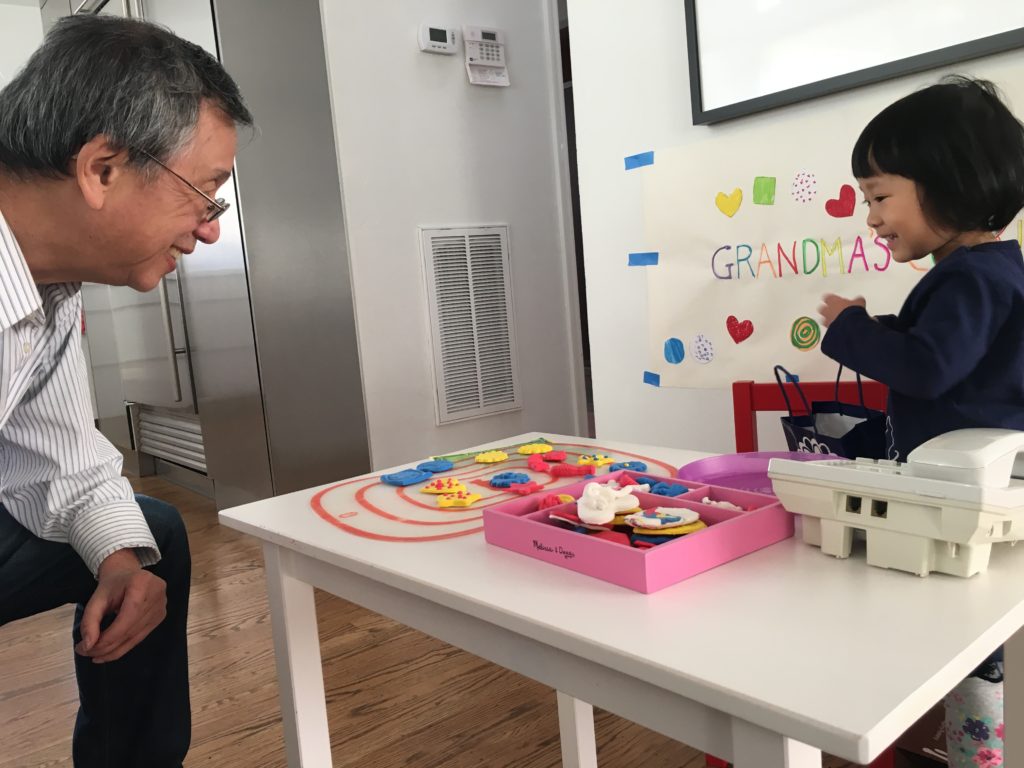
Your Turn to Run the Shop
Take turns running the shop. When it’s your turn, you can model behavior that the child will pick up on for her next time as shopkeeper. I usually promote my shop in my conversations with the customer. For example, this is a new shop and our baker is from Paris. Or, all of our cookies are the freshest because we bake them right here on the premises. Or, we use only organic ingredients.
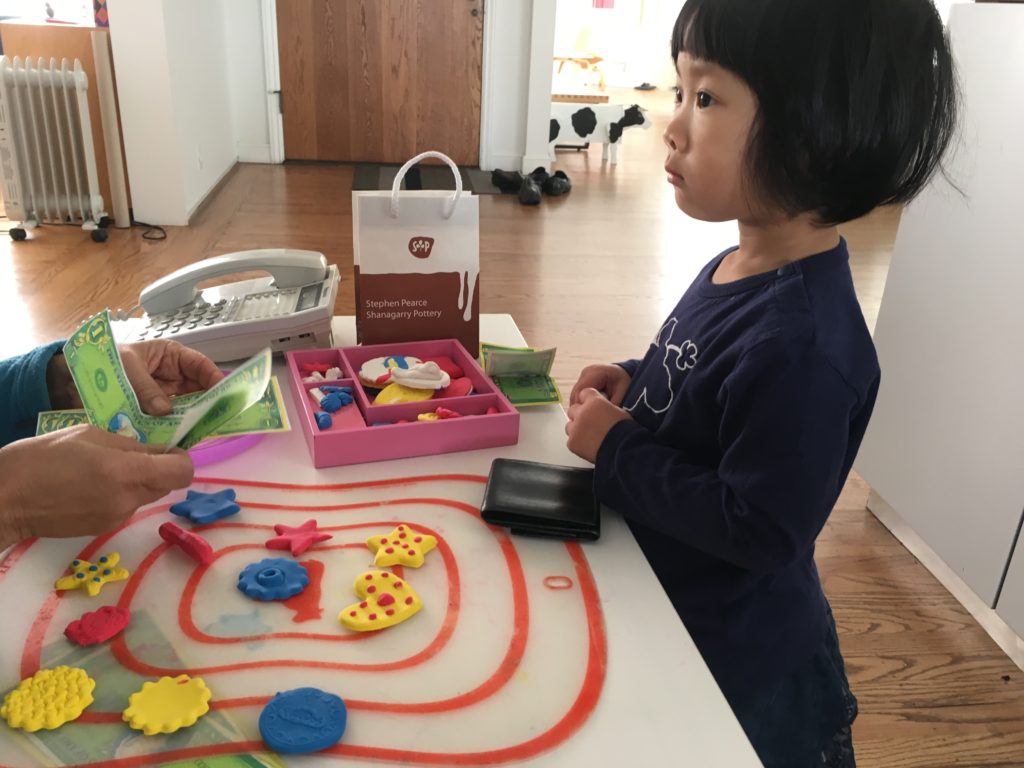
If the child comes to the shop with a doll, I ask the “baby’s” name and remark on how cute or well-behaved she is. I ask the baby’s age, and so forth. As a result, the child develops her own easy patter when it’s her turn to run the shop. I often give a small free cookie to the baby.
Play for Older Children
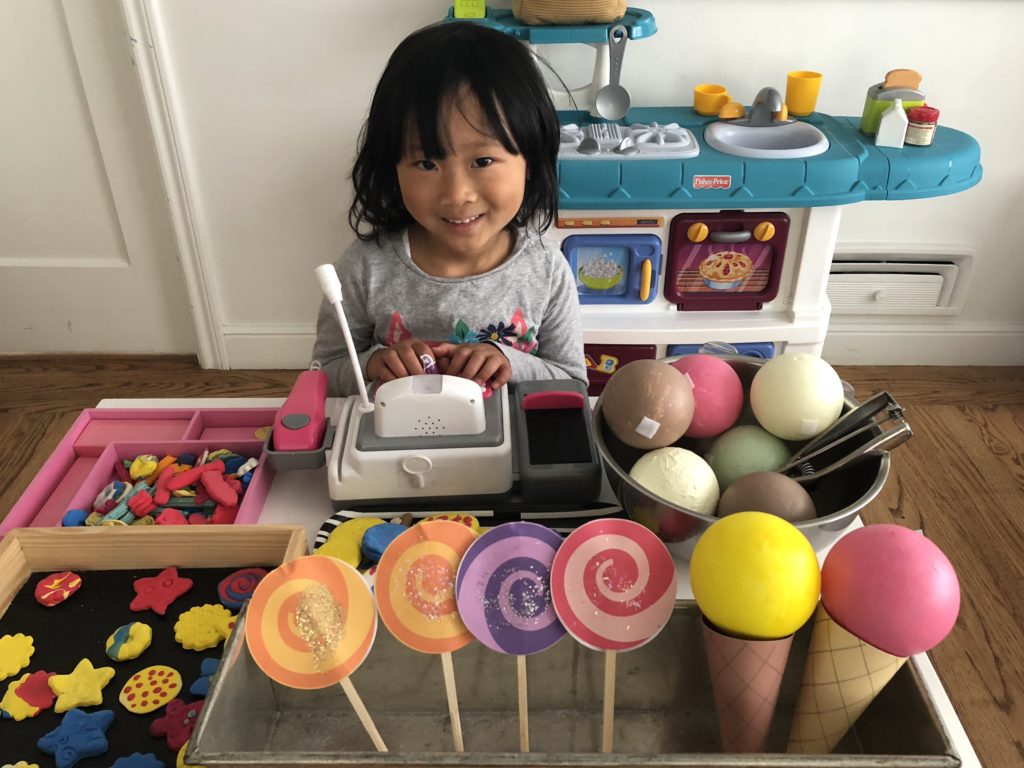
Among the learning games Miss T, now six, still enjoys is playing cookie store. At her age, we add more items, such as ice cream cones and lollipops that we’ve made ourselves. She doesn’t need hints on how to run the store or how to add up the items purchased. And she will engage naturally with the customers without any encouragement from me.
.
Don’t forget to sign up for my email newsletter! Every Wednesday, I’ll give you a new idea for an activity or insight to nurture the little ones in your life. Come visit!
